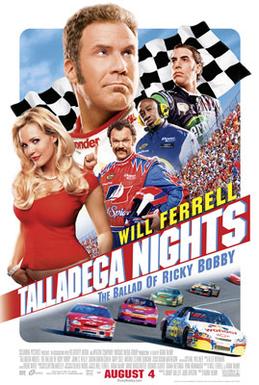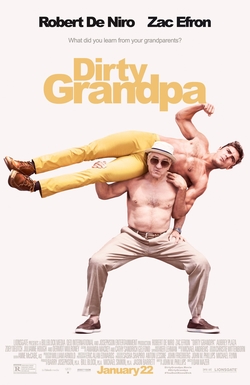
The Stunt Man is a 1980 American action comedy film starring Peter O'Toole, Steve Railsback and Barbara Hershey, and directed by Richard Rush. The film was adapted by Lawrence B. Marcus and Rush from the 1970 novel of the same name by Paul Brodeur. It tells the story of a young fugitive who hides as a stunt double on the set of a World War I movie whose charismatic director will do seemingly anything for the sake of his art. The line between illusion and reality is blurred as scenes from the inner movie cut seamlessly to "real life" and vice versa. There are examples of "movie magic", where a scene of wartime carnage is revealed as just stunt men and props, and where a shot of a crying woman becomes, with scenery, props and sound track, a portrait of a grieving widow at a Nazi rally. The protagonist begins to doubt everything he sees and hears, and at the end is faced with real danger when a stunt seems to go wrong.

Peter Henry Fonda was an American actor. He was the son of Henry Fonda, younger brother of Jane Fonda, and father of Bridget Fonda. He was a prominent figure in the counterculture of the 1960s. Fonda was nominated for the Academy Award for Best Original Screenplay for Easy Rider (1969), and the Academy Award for Best Actor for Ulee's Gold (1997). For the latter, he won the Golden Globe Award for Best Actor – Motion Picture Drama. Fonda also won the Golden Globe Award for Best Supporting Actor – Series, Miniseries or Television Film for The Passion of Ayn Rand (1999).

Muscle car is a description according to Merriam-Webster Dictionary that came to use in 1966 for "a group of American-made two-door sports coupes with powerful engines designed for high-performance driving." The Britannica Dictionary describes these as "an American-made two-door sports car with a powerful engine."

Pony car is an American car classification for affordable, compact, highly styled coupés or convertibles with a "sporty" or performance-oriented image. Common characteristics include rear-wheel drive, a long hood, a short decklid, a wide range of options to individualize each car and use of mass-produced parts shared with other models. The popularity of pony cars is largely due to the launch of the Ford Mustang in 1964.

Full-size car—also known as large car—is a vehicle size class which originated in the United States and is used for cars larger than mid-size cars. It is the largest size class for cars. In Europe, it is known as E-segment or F-segment.

Vanishing Point is a 1971 American action film directed by Richard C. Sarafian, starring Barry Newman, Cleavon Little, and Dean Jagger. It focuses on a disaffected ex-policeman and race driver delivering a muscle car cross-country to California while high on speed ('uppers'), being chased by police, and meeting various characters along the way. Since its release it has developed a cult following.

Talladega Nights: The Ballad of Ricky Bobby is a 2006 American sports comedy film directed by Adam McKay who co-wrote the film with Will Ferrell. It features Ferrell as the titular Ricky Bobby, an immature yet successful NASCAR driver. The film also features John C. Reilly, Sacha Baron Cohen, Gary Cole, Michael Clarke Duncan, Leslie Bibb, Jane Lynch, and Amy Adams in supporting roles. NASCAR drivers Jamie McMurray and Dale Earnhardt Jr. appear in cameos, as do broadcasting teams from NASCAR on Fox and NASCAR on NBC.
John Hough is a British film and television director. He is primarily known for his suspense films of the 1970s and 1980s, including Twins of Evil (1971), The Legend of Hell House (1973), The Incubus (1982) and American Gothic (1988), as well as the 1974 action thriller Dirty Mary, Crazy Larry.

Police vehicles in the United States and Canada consist of a wide range of police vehicles used by police and law enforcement officials in the United States and in Canada. Most police vehicles in the U.S. and Canada are produced by American automakers, primarily the Big Three, and many vehicle models and fleet norms have been shared by police in both countries.
Detroit/Hamtramck Assembly, also referred to as Factory Zero and GM Poletown, is a General Motors (GM) automobile assembly plant straddling the border between Detroit and Hamtramck, Michigan. It is located about three miles (five km) from GM's corporate headquarters.

Biggles is a 1986 British science fiction adventure film directed by John Hough. The plot involves time travel between the 1980s and World War I, involving the character, Biggles. The film stars Neil Dickson, Alex Hyde-White, and Peter Cushing in his final feature film role.
Adam Roarke was an American actor and film director.

Race with the Devil is a 1975 American action horror film directed by Jack Starrett, written by Wes Bishop and Lee Frost, and starring Peter Fonda, Warren Oates, Loretta Swit, and Lara Parker. Its plot follows two couples on a road trip who are pursued by a Satanic cult after witnessing a human sacrifice while camping in rural Texas. This was the second of three films Fonda and Oates would star in together. Race with the Devil is a hybrid of the horror, action, and car chase genres.
Car and Track was America's first nationally syndicated auto racing and car test television show. The executive producer for car and track productions was, John B Norman of Grand Rapids Michigan. "Big Bud Linneman filmed and MC the show. His son Dave drove the cars at a little-known track outside Grand Rapids Michigan, Grattan. The show aired on Saturday mornings normally and the ongoing sponsor was Casite automotive additives based in Hastings Michigan. John Norman owned an advertising agency in Grand Rapids and this was the basis for Executive Producers the production company. Executive producers also had an office in Los Angeles California. Norman would arrange with automakers to receive cars to test at the track and Grattan. Produced by Car and Track Productions, it was hosted and produced by Bud Lindemann, a famous race commentator of the time. After the TV series ended, Bud and his son David Lindemmann continued to film many types of racing. They compiled one of the most important film libraries of the early days of NASCAR. Car and Track was based in Grand Rapids, Michigan. This allowed them to have close relationships with Detroit automotive manufacturers and suppliers.

Susan Melody George is an English film and television actress. She is best known for appearing in films such as Straw Dogs (1971) with Dustin Hoffman, Dirty Mary, Crazy Larry (1974) with Peter Fonda, and Mandingo (1975) with Ken Norton.

Hi-risers are a type of heavily-customized automobile, typically a full-size, body-on-frame, rear-wheel drive American sedan modified by significantly increasing the vehicle's ground clearance and adding large-diameter wheels with low-profile tires. Depending on the model, year and bodystyle, cars customized in this style can be labeled "donk", "box" or "bubble". Many within the community refer to this style of car as simply a "big rim" or "big wheel" car.

Coke bottle styling is an automotive body design with a narrow center surrounded by flaring fenders. This design element bears a general resemblance to a Coca-Cola classic glass contour bottle design. Industrial designer Raymond Loewy introduced it on the radical 1962 Studebaker Avanti gran turismo.

Wheels of Terror is a 1990 American made-for-television thriller film directed by Christopher Cain and starring Joanna Cassidy and Marcie Leeds. The film originally debuted on the USA Network in 1990. The plot concerns the unseen driver of a primer gray Dodge Charger, kidnapping, molesting, and sometimes murdering young girls around the fictional locale of Copper Valley, Arizona and a bus driver who chases the car, after it kidnaps her daughter played by Marcie Leeds.

Fighting Mad is a 1976 American action film directed by Jonathan Demme, about an Arkansas farmer played by Peter Fonda who uses Guerrilla tactics against corrupt land developers attempting to evict his family and his neighbors in order to stripmine their land.

Dirty Grandpa is a 2016 American buddy sports romantic sex comedy film about a lawyer who drives his grandfather to Florida during spring break. The film was directed by Dan Mazer and written by John Phillips. It stars Robert De Niro and Zac Efron in the leading roles, with Aubrey Plaza, Zoey Deutch, Julianne Hough and Dermot Mulroney in supporting roles. It was filmed on location in Atlanta from January 19 to May 9, 2015.
















